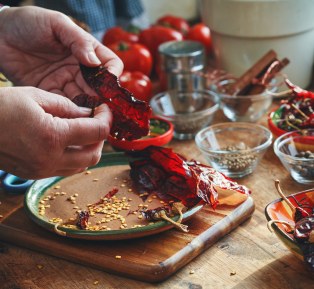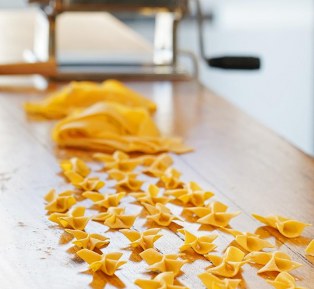
Culinary Inspiration by Otao Kitchen
Cook . Connect. Celebrate
At Otao Kitchen, we believe cooking is one of the most powerful ways to connect—with yourself, your loved ones, and the world around you. It can put a smile on your face, bring family and friends together, and create memories that last a lifetime.
But cooking is more than just connection—what you choose to cook and eat impacts your health and the health of the planet. That’s why we’re passionate about making it as easy and enjoyable as possible for everyone to experience the joy of good, home-cooked food.
“Cook to Connect” is at the core of everything we do. Through our blog, food experiences, and global travel inspiration, we explore the deep relationships between cuisine, culture, and community. From vibrant street food across the globe to time-honoured family recipes passed through generations, we share with you the stories, flavours, and traditions that shape the way the world eats.
Here, you’ll find:
Practical cooking tips and techniques
Authentic global recipes
Cultural and culinary insights
Event planning advice
Kid-friendly cooking inspiration
Travel stories and destination food guides
Seasonal celebrations and global food festivals
Whether you're in your home kitchen or exploring a faraway land, we’re here to help you cook with purpose—and connect with the world through food.
15 Must-try Traditional Chinese Cuisine 2024
Get ready to tantalize your taste buds with a journey through the vibrant world of traditional Chinese cuisine. From spicy Sichuan specialties to comforting dumplings, Chinese food offers a rich tapestry of flavors and textures that are sure to delight any palate.
12 Best Team Building Activities for Small Offices 2024
If you are a small business owner, you know that a talented and supportive team can elevate your company to new heights. The right team meshes well, works together seamlessly, and drives your business toward achieving its goals. While hiring the right people is a great start, team-building activities are crucial for improving efficiency, fostering strong relationships, and boosting morale among team members.
Ultimate Guide for Team Building Activities for Work 2024
Teamwork makes the dream work! But fostering effective teamwork requires more than just assigning tasks; it's about building strong relationships, encouraging communication, and fostering a positive work environment. That's where team-building activities come in! These fun and interactive exercises are not only a break from the routine but also essential for boosting morale, enhancing collaboration, and strengthening bonds among coworkers.
Couples Cooking Class in Melbourne - Cooking with Love
If you're looking for romantic date night ideas, couples cooking class Melbourne is just what you need! They're perfect for couples who want to try something new or break out of their routine during the week. These cooking courses will make your date nights extra special in 2024.
How to Organize Cooking Class Team Building to Stir Up Success
In today's fast-paced work environments, fostering strong teamwork and collaboration among employees is essential for success. Traditional team-building activities like trust falls and icebreaker games have their place, but why not spice things up a bit? Enter cooking class team building – a fun and engaging way to bring colleagues together, build relationships, and enhance workplace dynamics.
Quick and Easy Dinner Ideas - Dinner in a Flash
These are many quick and easy dinner ideas if you need to feed the family or kids. There are many quick, easy, vegetarian, chicken, and inexpensive recipes available, so there's something for everyone.
15 Healthy Vegan Recipes - A Taste of Well-being:
Eating plant-based shouldn't mean sacrificing flavor or fun! We've curated a collection of our top healthy vegan recipes guaranteed to wow even the fussiest eaters.
Complete Guide for Making Pasta from Scratch
Our new favorite recipe for making pasta from scratch is here! Jack and I have been playing with bread, baked items, and even okonomiyaki in the kitchen more than usual lately. We do, however, keep returning to homemade pasta. It only needs a few simple ingredients and is a lot of fun to prepare together. Of course, the fact that it tastes so good is also a plus.
7 Essential Tools for Sushi Making at Home
Are you ready to roll up your sleeves and dive into the wonderful world of homemade sushi? Before you get started, let's talk about the must-have tools you'll need to craft those perfect rolls right in your own kitchen. From sticky rice to fresh fish, having the right gear makes all the difference. So, grab your chopsticks and get ready to explore the 7 essential tools that'll take your homemade sushi game to the next level!
You may also want to try
Fold & Flow - MFWF
2 Hours
$157
The Confident Home Chef – Sauces, Fermentation & Pickling Workshop
1 Day (9-4pm)
$745
The Confident Home Chef – Bakery Specialties Workshop
1 Day (9-4pm)
$745
The Confident Home Chef – Pastry Specialties Workshop
2 Days (9-4pm)
$745
The Confident Home Chef – Vegetable & Plant-Based Cooking Workshop
1 Day (9-4pm)
$745
The Confident Home Chef – Seafood Mastery Workshop
24 Hours
$745
The Confident Home Chef – Poultry Essential Workshop
1 Day (9-4pm)
$745
The Confident Home Chef – Pork & Game Essentials Workshop
1 Day (9-4pm)
$745
















